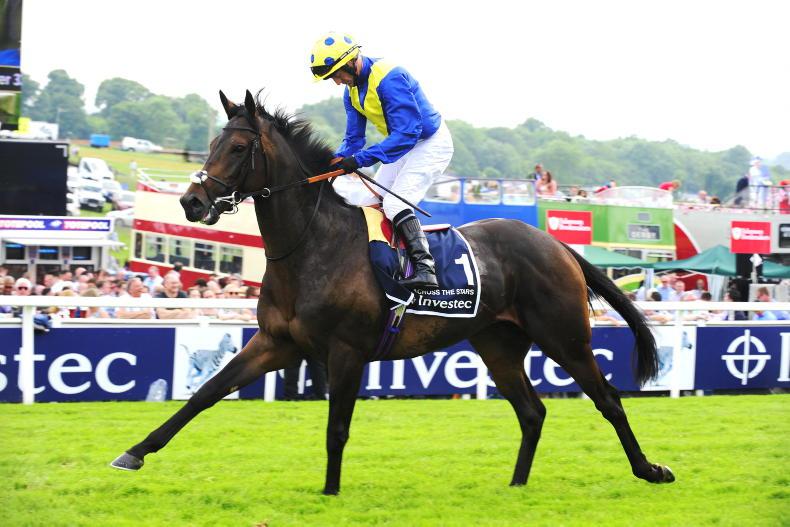AN online reference to an interview with Criquette Head and Princess Zahra Aga Khan in the latest Bloodstock Notebook in which they lamented the changing focus in breeding gained a bit of attention this week.
“People were breeding for their pleasure, now it’s all commercial,” said Criquette Head
Princess Zahra observed: “We have lost a lot of sire-lines though that concentration of what is commercial, what’s marketable, what’s sellable rather than what is good for the breed.”
But is that likely to be turned around, given the current trends in breeding? It has always been said that the Derby is a stallion-making race, and it did give us great winners who went on to sire Derby winners, such as Nijinsky, Mill Reef and Galileo. But a look at the stud record of this century’s Derby winners leaves some pause for thought.
Of the 25 winners since 2000, 11 were owned by the Coolmore partners, three by Godolphin (includes Princess Haya), two were Aga Khan-owned and two owned by Saeed Suhail. All owner-breeders or wealthy middle eastern owners.
The other six were owned by Ballymacoll Stud, Royal Ascot Racing Club, Anthony Pakenham, Al Homaizi/Al Sagar, Christopher Tsui and Anthony Oppenheimer. And three of those were also homebred but by smaller players who are now absent from the scene. It doesn’t paint a lively picture of many new players getting involved or being committed.
I looked at the stud careers of the last 12 Derby winners and compared them to winners of the July Cup, also considered a stallion-making race.
The July Cup, of course, has a much wider range of successful owners, 11 different owners in the 12-year period from 2012 to 2024, which you would think is better for racing in general.
In the six-year period 2014 to 2019, we had five July Cup winners entering stud at €20,000 or more but only Australia and Golden Horn going over the €20,000 mark as Derby winners.
The most recent Derby winner at stud in Britain or Ireland is the 2018 winner Masar. It doesn’t look a cheery picture for the mile and a half colts.
You couldn’t really ask for a better racetrack career than that of Golden Horn but his fee went from £60,000 (probably too high) to £8,000 in seven years. Success is demanded immediately.
It’s also notable though how most of the sprinters have also pretty much halved in stud fees. Success must be immediate for them too.
Criquette Head may have been correct when she said that people used to breed for pleasure but now it’s all commercial.
Taking the above statistics into account, it’s hard to see where any change could come from in the near future.
AS a son of Galileo and out of a full-sister to Giant’s Causeway, a lot would have been expected of Gleneagles on the racetrack.
By the middle of his three-year-old career, he was well on the way to matching his illustrious relative.
He had gone one better in winning both the Group 1 English and Irish 2000 Guineas and added the St James’s Palace Stakes at Royal Ascot.
But from there, their ways parted. Gleneagles went to York for the Juddmonte International and to Leopardstown for the Irish Champions Stakes but on neither occasion did he get beyond the pre-parade ring, a late withdrawal due to good to soft and yielding ground.
Whereas the ‘Giant’ took on all comers, Gleneagles’ career fizzled out in pretty timid fashion with a sixth of nine to Solow on good to soft in the QEII and a last of eight to American Pharoah in the Breeders’ Cup Classic. The stallion is now 12-years old but he has had a pretty outstanding season with two Group 1 winners, one at six furlongs and one at a mile and a half.
The July Cup winner Mill Stream is his leading earner but the middle distance three-year-olds, Ambiente Friendly, Palladium and Calandagan all look above average and should add to their tally before the end of the season, Joseph O’Brien’s Killarney winner Galen is due a step up in class while Epsom group winner Royal Scotsman is another who should find a few more decent pots.
A BRIEF shout out to the many parents on the road through the summer keeping the pony racing scene going and much of the next generation of young riders on the path to success. A glance at last week’s results shows there were many miles covered by those who participated at Portsalon in Donegal on Saturday and Taghmon in Wexford on Sunday. Goggle Maps tell me the venues are 425km apart, a journey of five hours and 40 minutes. It takes a lot of unrecognised effort to keep the winners flowing.




 This is a subscriber-only article
This is a subscriber-only article
 It looks like you're browsing in private mode
It looks like you're browsing in private mode










SHARING OPTIONS: